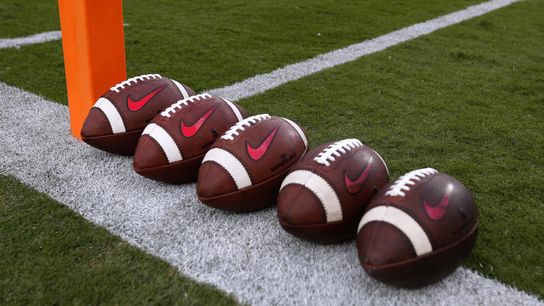The NCAA could do away with the 25-man scholarship limit (dubbed "initial counters"), possibly by as soon as the end of this month.
The 25-man limit is a relic of another era. Established in 2011, it was a response to Houston Nutt signing 37 players at Ole Miss in 2009. That practice, known as "oversigning," inevitably led to players having the rug pulled out from under them -- either recent signees who learned they weren't wanted until the following spring, or current players who were told they no longer had a scholarship.
Over the years, the NCAA moved to strengthen the 25-man limit.
Now, though, times have changed.
Kansas has been stuck in scholarship hell for darn near a decade, with numbers at one point in the low 40s and at 53 as recently as 2018. A hard 25-man limit, combined with natural attrition every program faces, meant KU had to wait until 2022 before it could even talk about returning to the 85-man number.
More recently, Arizona State has lost more than two dozen players to the Transfer Portal since the end of last season. Even upping the limit to 32 (25 initial counters plus seven transfers) would not allow the Sun Devils to catch up in time for this fall.
Some have suggested keeping the 25-man initial counter limit and then moving to a 1-for-1 system on transfers, where each program can add one imPort for each exPort, but it seems a simpler system is set to win out.
Source: NCAA D1 Council will discuss and likely vote in two weeks to waive 25 man counter limit in football. Notably this is a wavier and, in its current form, will be just for the next two years. Coaches will be able to go above the 25/32 limit as soon as the end of the month.
— Bryan Fischer (@BryanDFischer) May 4, 2022
In short, programs can add as many initial counters and transfers as they want, but to limit greyshirting and trap-door cuts, they may not go over 85 scholarships at any one time. Presently, the current rules allow teams to go over 85 scholarships so long as they get to the number by the opening of training camp.
“We have to do something,” West Virginia head coach Neal Brown told Sports Illustrated. “The current system doesn’t work. It’s extremely difficult to get to your 85 without putting walk-ons on scholarship.”
Removing the 25-man limit has been framed as a player safety issue. By limiting each team to 25 (or even 32) new players each year, the current system keeps a large number of teams under 85 scholarships, and thereby exposes players to injury by being short of the ideal number at any given position.
Player safety arguments happen to be the one universally-agreed upon principal in college football, which also makes it a sure-fire way to get a rule change fast tracked for immediate approval.
“Our coaches have always been in support of the 25,” Berry says, “but the landscape has changed. All of our coaches have recognized that it’s not realistic anymore. From a health-and-safety standpoint, the only way to allow us to get to a situation to have the right amount of players at positions is to just get to 85.”
WF coach Dave Clawson told me he thinks the avg program is losing 12-15 players in the portal, which is why there's strong support from coaches to scrap the 25 initials and allow them to get to 85 as they can. "The numbers don't work if you're allowed to sign 25 a year," he said.
— Heather Dinich (@CFBHeather) May 4, 2022
Even if this rule is well-intentioned from a player-safety perspective, a necessary reaction to the Transfer Portal could, in turn, push even more kids to the Transfer Portal. What's to stop the Houston Nutt of 2022 and beyond from signing 40 kids per class while pushing dozens of kids per year to the Portal?
“The thing that concerns me is that coaches will be flipping rosters constantly and potentially running kids off,” West Virginia AD and Division I Council chairman Shane Lyons said. “That’s why we got the caps. You have to go back in history and ask, ‘How did we get here?’”
As always, stay tuned to The Scoop for the latest.
